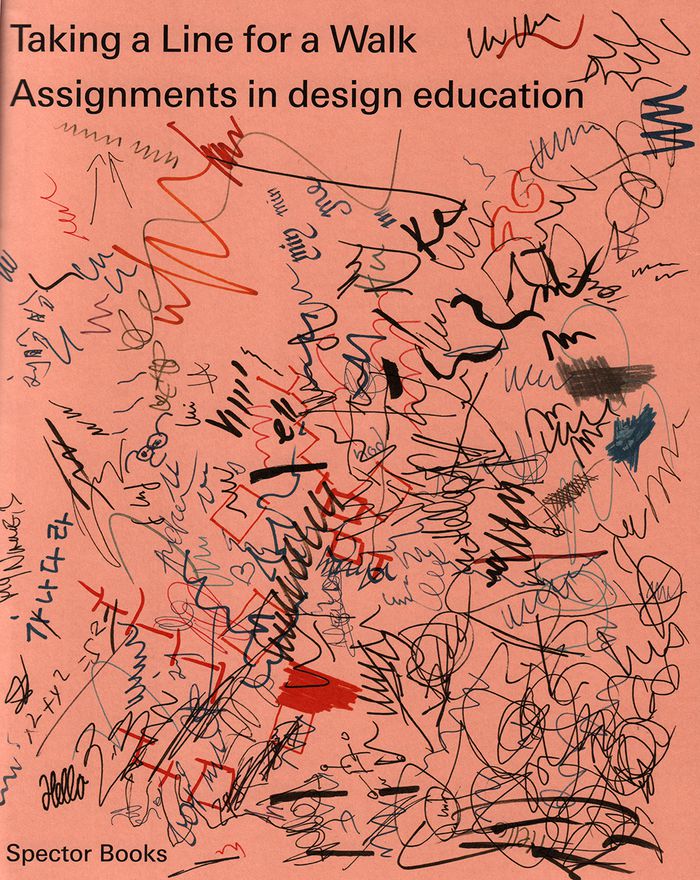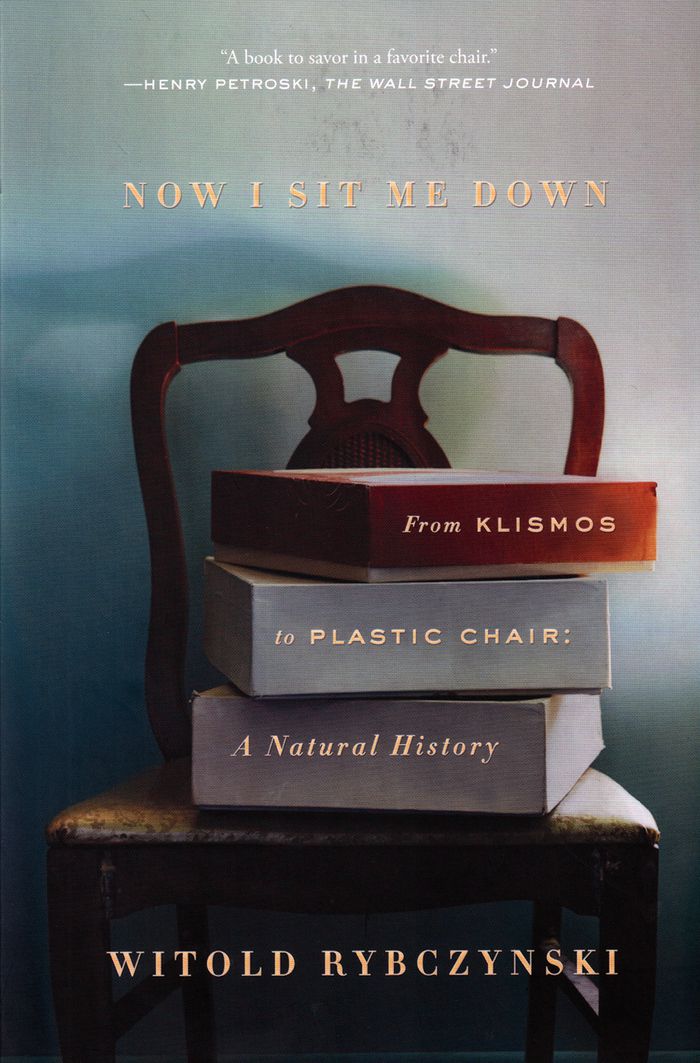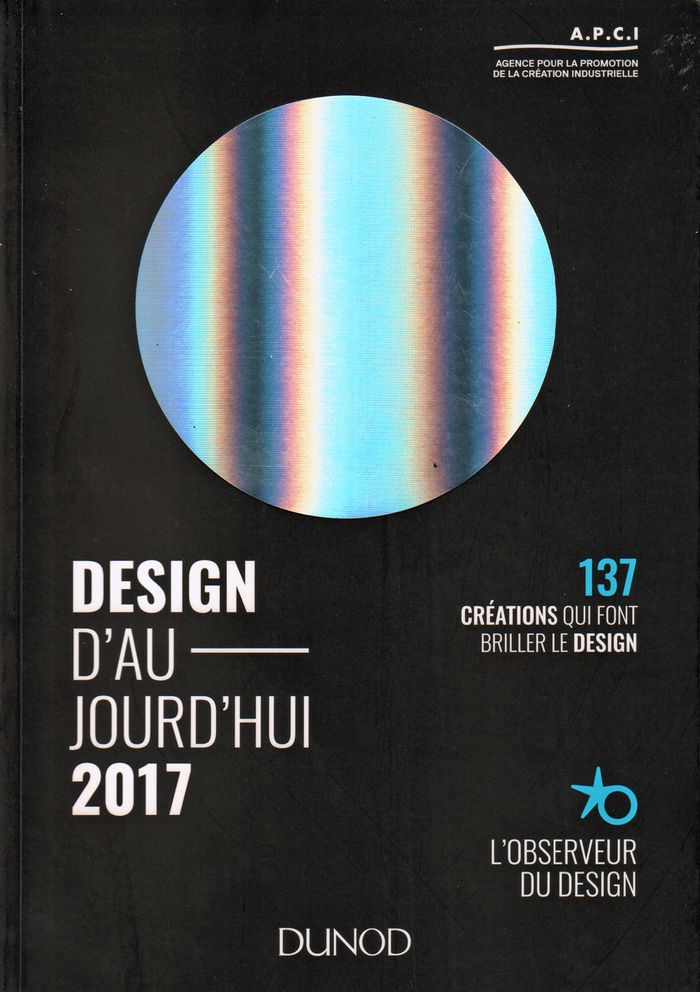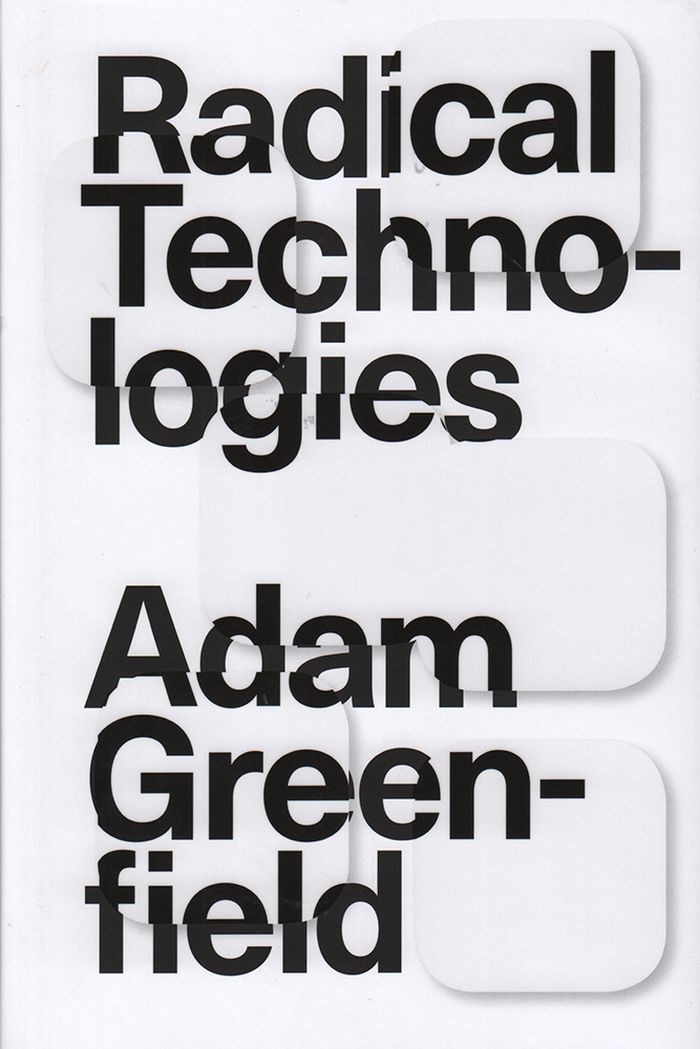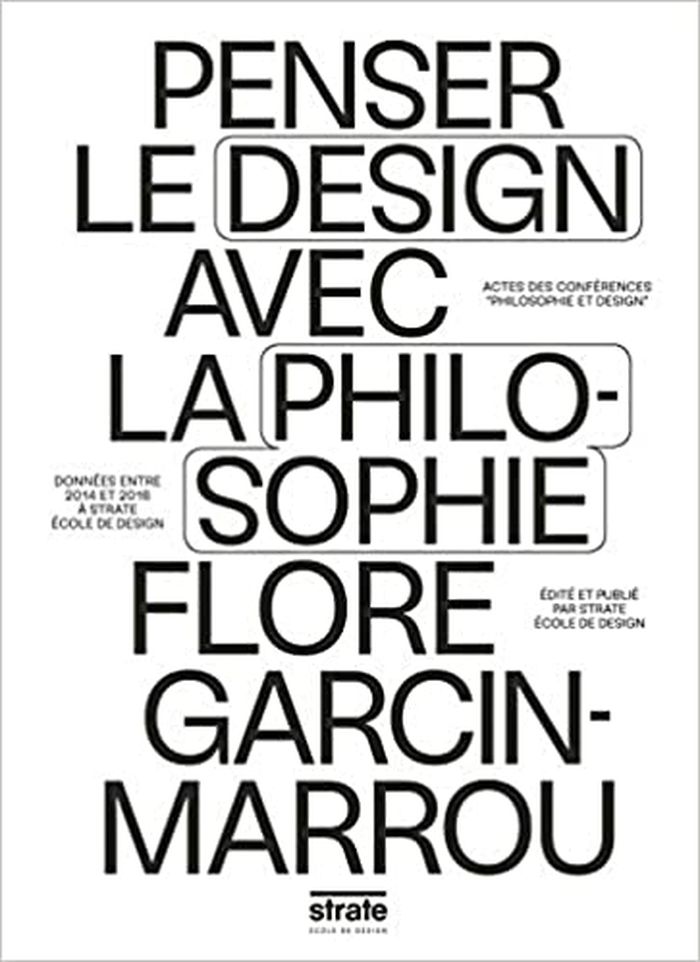$55.00
(available to order)
Summary:
Assignments can give instructions, describe an exercise, present a problem, set out rules, propose a game, stimulate a process, or simply throw out questions. "Taking a line for a walk" brings attention to something that is often neglected: the assignment as a pedagogical element and verbal artefact of design education. This book is a compendium of 224 assignments, edited(...)
Taking a line for walk: assignments in design education
Actions:
Price:
$55.00
(available to order)
Summary:
Assignments can give instructions, describe an exercise, present a problem, set out rules, propose a game, stimulate a process, or simply throw out questions. "Taking a line for a walk" brings attention to something that is often neglected: the assignment as a pedagogical element and verbal artefact of design education. This book is a compendium of 224 assignments, edited by Nina Paim and coedited by Emilia Bergmark. A reference book for educators, researchers, and students alike, it includes both contemporary and historical examples and offers a space for different lines of design pedagogy to converge and converse. An accompanying essay by Corinne Gisel takes a closer look at the various forms assignments can take and the educational contexts they exist within. Taking a Line for a Walk derived from an exhibition of the same name at the International Biennial of Graphic Design Brno 2014.
Design Theory
$22.99
(available to order)
Summary:
Have you ever wondered where rocking chairs came from, or why cheap plastic chairs are suddenly everywhere? In "Now I sit me down", the distinguished architect and writer Witold Rybczynski chronicles the history of the chair from the folding stools of pharaonic Egypt to the ubiquitous stackable monobloc chairs of today. He tells the stories of the inventor of the bentwood(...)
Now I sit me down: from klismos to plastic chair, a natural history
Actions:
Price:
$22.99
(available to order)
Summary:
Have you ever wondered where rocking chairs came from, or why cheap plastic chairs are suddenly everywhere? In "Now I sit me down", the distinguished architect and writer Witold Rybczynski chronicles the history of the chair from the folding stools of pharaonic Egypt to the ubiquitous stackable monobloc chairs of today. He tells the stories of the inventor of the bentwood chair, Michael Thonet, and of the creators of the first molded-plywood chair, Charles and Ray Eames. He reveals the history of chairs to be a social history—of different ways of sitting, of changing manners and attitudes, and of varying tastes. The history of chairs is the history of who we are. We learn how the ancient Chinese switched from sitting on the floor to sitting in a chair, and how the iconic chair of Middle America—the BarcaLounger—traces its roots back to the Bauhaus. Rybczynski weaves a rich tapestry that draws on art and design history, personal experience, and historical accounts. And he pairs these stories with his own delightful hand-drawn illustrations: colonial rockers and English cabrioles, languorous chaise longues and no-nonsense ergonomic task chairs—they’re all here. The famous Danish furniture designer Hans Wegner once remarked, “A chair is only finished when someone sits in it.” As Rybczynski tells it, the way we choose to sit and what we choose to sit on speak volumes about our values, our tastes, and the things we hold dear.
Design Theory
Design d'aujourd'hui
$50.95
(available to order)
Summary:
Design de produits, d’espaces, d’interaction, de service… Le design est omniprésent. Il évolue sans cesse, s’adapte à nos vies, à nos envies, à nos besoins qu’il anticipe parfois. À la fois enjeu économique, culturel et de civilisation, le design est un vecteur de croissance et de différenciation pour les entreprises, un formidable moyen d’expression pour les créateurs et(...)
Design d'aujourd'hui
Actions:
Price:
$50.95
(available to order)
Summary:
Design de produits, d’espaces, d’interaction, de service… Le design est omniprésent. Il évolue sans cesse, s’adapte à nos vies, à nos envies, à nos besoins qu’il anticipe parfois. À la fois enjeu économique, culturel et de civilisation, le design est un vecteur de croissance et de différenciation pour les entreprises, un formidable moyen d’expression pour les créateurs et un outil indispensable à toute démarche visant à concilier progrès et respect de l’environnement. Après avoir donné la parole à quelques acteurs importants du design, cet ouvrage présente 137 créations issues du savoir-faire et de l’imagination des designers d’aujourd’hui. 137 designs étonnants, pratiques, ludiques ou performants, qui témoignent de l’importance du design et de ce qu’il nous réserve de plus beau.
Design Theory
$39.99
(available to order)
Summary:
In this excavation of our Information Age, Adam Greenfield forces us to reconsider our relationship with the networked objects, services and spaces that define us. It is time to re-evaluate the Silicon Valley consensus determining the future. Having successfully colonized everyday life, these radical technologies are now conditioning the choices available to us in the(...)
Radical technologies: the design of everyday life
Actions:
Price:
$39.99
(available to order)
Summary:
In this excavation of our Information Age, Adam Greenfield forces us to reconsider our relationship with the networked objects, services and spaces that define us. It is time to re-evaluate the Silicon Valley consensus determining the future. Having successfully colonized everyday life, these radical technologies are now conditioning the choices available to us in the years to come. How do they work? What challenges do they present to us, as individuals and societies? Who benefits from their adoption? In answering these questions, Greenfield’s timely guide clarifies the scale and nature of the crisis we now confront —and offers ways to reclaim our stake in the future.
Design Theory
$51.95
(available to order)
Summary:
An exploration of infographics and data visualization as a cultural phenomenon, from eighteenth-century print culture to today's data journalism. Infographics and data visualization are ubiquitous in our everyday media diet, particularly in news—in print newspapers, on television news, and online. It has been argued that infographics are changing what it means to be(...)
The infographic: a history of data graphics in news and communications
Actions:
Price:
$51.95
(available to order)
Summary:
An exploration of infographics and data visualization as a cultural phenomenon, from eighteenth-century print culture to today's data journalism. Infographics and data visualization are ubiquitous in our everyday media diet, particularly in news—in print newspapers, on television news, and online. It has been argued that infographics are changing what it means to be literate in the twenty-first century—and even that they harmonize uniquely with human cognition. In this first serious exploration of the subject, Murray Dick traces the cultural evolution of the infographic, examining its use in news—and resistance to its use—from eighteenth-century print culture to today's data journalism. He identifies six historical phases of infographics in popular culture: the proto-infographic, the classical, the improving, the commercial, the ideological, and the professional.
Design Theory
$39.95
(available to order)
Summary:
''Daddy wouldn't buy me a Bauhaus'' collects the writings of legendary British wordsmith Janet Abrams for the first time. From pivotal figures in international modernism to the pioneers of digital medium, Abrams explored the ideas, theories, and emotions that fueled their work. The book's twenty-six profiles, written in Abrams's signature, personal, often hilarious style,(...)
Daddy wouldn't buy me a Bauhaus: profiles in architecture and design
Actions:
Price:
$39.95
(available to order)
Summary:
''Daddy wouldn't buy me a Bauhaus'' collects the writings of legendary British wordsmith Janet Abrams for the first time. From pivotal figures in international modernism to the pioneers of digital medium, Abrams explored the ideas, theories, and emotions that fueled their work. The book's twenty-six profiles, written in Abrams's signature, personal, often hilarious style, include Reyner Banham, Berthold Lubetkin, Philip Johnson, Paul Rand, Phyllis Lambert, Frank Gehry, Rem Koolhaas, Muriel Cooper, April Greiman, and Michael Bloomberg. Many of the profiles are back in print for the first time, having originally appeared in Blueprint, I.D. magazine, the Independent, and in books and catalogs from the 1980s through the early 2000s. A foreword by Blueprint's founding editor, Deyan Sudjic, and new reflections by Abrams set the stage.
Design Theory
Materiality
$38.95
(available to order)
Summary:
Throughout history and across social and cultural contexts, most systems of belief—whether religious or secular—have ascribed wisdom to those who see reality as that which transcends the merely material. Yet, as the studies collected here show, the immaterial is not easily separated from the material. Humans are defined, to an extraordinary degree, by their expressions of(...)
Materiality
Actions:
Price:
$38.95
(available to order)
Summary:
Throughout history and across social and cultural contexts, most systems of belief—whether religious or secular—have ascribed wisdom to those who see reality as that which transcends the merely material. Yet, as the studies collected here show, the immaterial is not easily separated from the material. Humans are defined, to an extraordinary degree, by their expressions of immaterial ideals through material forms. The essays in ''Materiality'' explore varied manifestations of materiality from ancient times to the present. In assessing the fundamental role of materiality in shaping humanity, they signal the need to decenter the social within social anthropology in order to make room for the material. Considering topics as diverse as theology, technology, finance, and art, the contributors—most of whom are anthropologists—examine the many different ways in which materiality has been understood and the consequences of these differences.
Design Theory
$35.00
(available to order)
Summary:
Challenging the way we look at, think of and interact with the social world, "Social matter, social design" emphasizes the role of materiality. This enlarged field for engagement demands that design incorporates a more nuanced and complex reading of how the social is intertwined with the material, which confronts the often reductive or simplistic notion of ‘social(...)
Social matter, social design: for good or bad, all design is social
Actions:
Price:
$35.00
(available to order)
Summary:
Challenging the way we look at, think of and interact with the social world, "Social matter, social design" emphasizes the role of materiality. This enlarged field for engagement demands that design incorporates a more nuanced and complex reading of how the social is intertwined with the material, which confronts the often reductive or simplistic notion of ‘social design’, and offers novel forms of critical and meaningful engagement at a time of mounting social contradictions. The essays are centered around four major themes: the body; earth; the political; and technology.
Design Theory
$23.00
(available to order)
Summary:
Pédagogique, cet ouvrage est destiné à des étuduants en design intéressés par la philosophie. Il est la restitution de sept conférences données à Strate École de design de 2014 à 2016 sur le thème « Philosophie et design ». Chaque chapitre s'ouvre sur la problématisation d'une question qui est analysée à partir de la mise en perspective de textes de trois auteurs. Penser(...)
Penser le design avec la philosophie
Actions:
Price:
$23.00
(available to order)
Summary:
Pédagogique, cet ouvrage est destiné à des étuduants en design intéressés par la philosophie. Il est la restitution de sept conférences données à Strate École de design de 2014 à 2016 sur le thème « Philosophie et design ». Chaque chapitre s'ouvre sur la problématisation d'une question qui est analysée à partir de la mise en perspective de textes de trois auteurs. Penser l'objet, designer nos existences, la pensée écologique, le cyborg, l'innovation, telles sont quelques-unes des thématiques abordées.
Design Theory
Hilde Bouchez: A wild thing
$38.00
(available to order)
Summary:
Everyday objects can have an extra dimension or quality that has no relation to functionality, form, a concept or a trend. So what is it that gives a particular glass an 'aura'? Why should one thing have more shine, passion and 'mystical allure' than another? 'A Wild Thing' attempts to identify and describe these often intangible qualities. There seems to be an inner(...)
Hilde Bouchez: A wild thing
Actions:
Price:
$38.00
(available to order)
Summary:
Everyday objects can have an extra dimension or quality that has no relation to functionality, form, a concept or a trend. So what is it that gives a particular glass an 'aura'? Why should one thing have more shine, passion and 'mystical allure' than another? 'A Wild Thing' attempts to identify and describe these often intangible qualities. There seems to be an inner light that shines from certain things. Unlike the blinding spotlight of media and marketing, this light is gentle and clear and reflects the methodology and intention of the maker. Ancient craftsmen designed from a place of unity with matter and the cosmos, putting themselves at the service of the making process and thereby creating a moment of transference from maker to thing. In a series of essays, Hilde Bouchez reflects on design history and the latest movements within the design world. She also presents a phenomenological methodology that opens up a new, more poetic approach to everyday objects for both maker and consumer. The texts are linked by the author’s search for a sustainability and meaning that transcends the organic component of materials.
Design Theory
